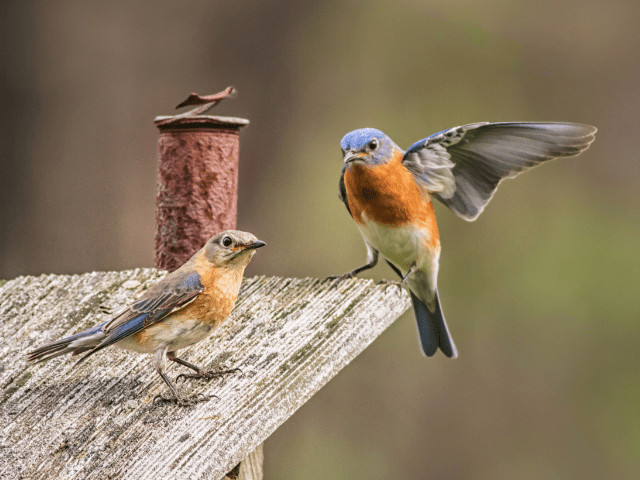Ah, the Prairie State, one of the best places for birdwatching. Having 2 national forests, 5 state forests, and numerous parks where our little friends could be lurking and enjoying their stay.
And…
With a little over 400 species willing to entertain you, we narrowed down their number and gave them the spotlight for bird identification. Although their personalities vary, they are sure to keep you entertained.
We’ll give you information on how your feathered friends look like, when you can see them, and more. Set up your bird feeder and bird baths for these backyard birds.
We won’t keep you waiting so scroll below to find out more about them!
The Twelve Most Abundant Illinois Birds
1. American Robin
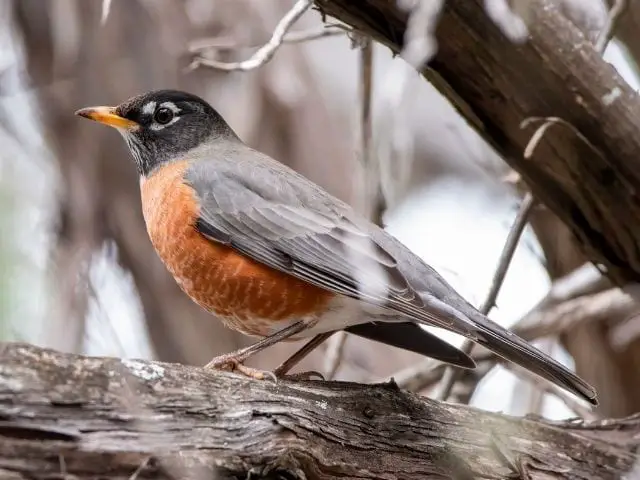
These small-sized red and black migratory songbirds tend to travel a lot around the United States of America. These birds can be seen year-round and they are the most commonly seen bird in Lake Michigan and across the whole state.
However, because these birds live in the United States of America, they were decided to be called American Robins.
The male American Robins differ from females in that males have more colorful plumage. The females have dull colors, while males have bright ones. Their size and shape are also different; female bodies are smaller and thinner, and males are slightly larger.
During mating season, males sing to attract their partners; females guard the eggs by sitting on them as males try to provide food and safety.
For their food, their favorites are small insects and their larvae, small nuts, and berries. They feast on the seeds of small bushes and shrubs too.
2. Blue Jay
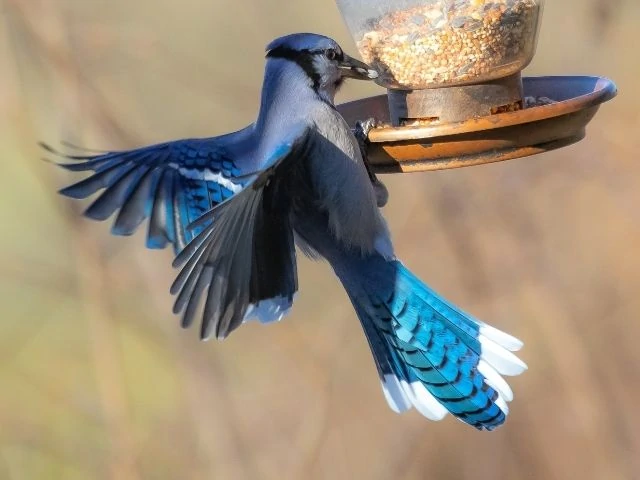
This bird locally lives in Eastern North America but is found in different places as well and belongs to the Corvidae family. They are fond of places with lots of trees as they breed in these areas.
Their signature is their blue and white look; the chest of the bird being white, while the back and wings are blue. Both the male and female have a comparable body color, shape, and weight, including their similar wingspan.
Blue Jays have an average body length of 22 –30 cm and a wingspan of 34 – 43 cm. They can be up to 100g in weight.
A black collar line runs over the neck of this bird. Nuts, seeds, berries, soft fruits, and insects, and worms are among their favorite foods. They are skilled at cracking a variety of nuts.
They breed in the trees, with the female protecting the eggs and young birds once they hatch, and the male providing her with all of the food she needs during this time. They spend roughly two months with their parents before taking off on their own.
3. House Finch
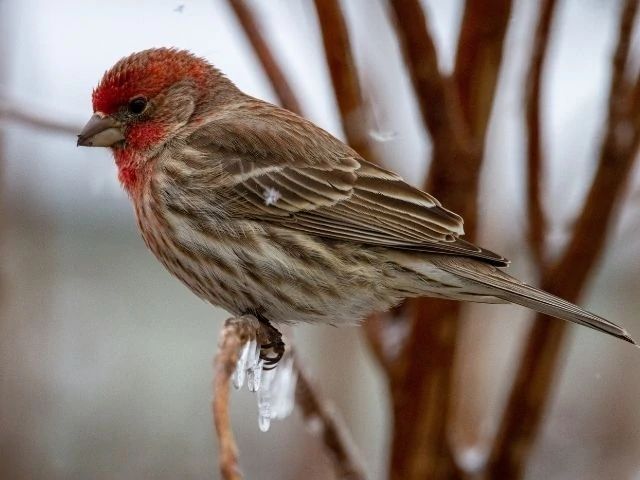
This small-sized bird comes from the Finch family. They are social birds that can adapt to human settlements and environments.
This bird was only seen in the West in the past, but can now be seen everywhere.
The males utilize a high-pitched whistle to attract the females for breeding. The average adult bird measures 5 to 6 inches long, has a wingspan of 10 inches, and weighs over 21 grams.
The body plumage and feather color of a male differs from that of a female. Males have brown plumage with dark brown markings above their wings, while females have brown and gray plumage.
The House Finches come to the bird feeders to eat. Small worms, insects, seeds from small plants, and berries from select plants are all their favorites.
4. American Goldfinch
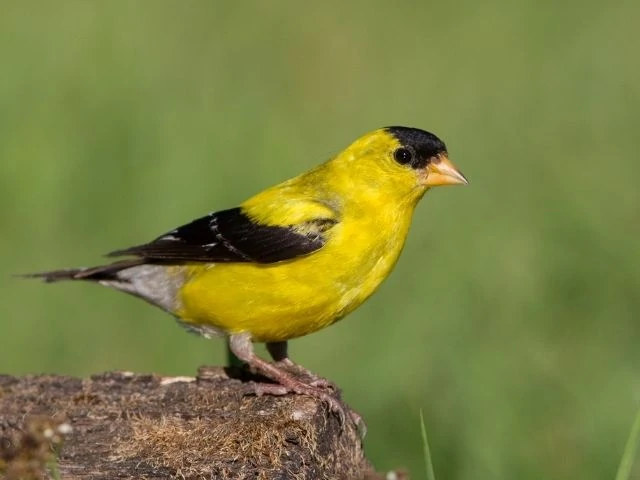
This songbird is a bird native to the region of Northern America. Their appearance stands out with their plumage being brighter than any other bird. Unlike other species, males and females are so similar that the only difference is the black spot on the heads of the males.
This bird's plumage is bright yellow, with yellow underparts and upperparts. Also, this bird has black wings and the underside of the wings is white. Black feathers with little white patterns adorn their tail.
Their beaks are a vibrant yellowish pink color. The male and female are nearly identical in terms of size, weight, and wingspan as well.
Small insects, berries, and seeds from small plants and bushes are all favorites of this bird.
5. House Sparrow
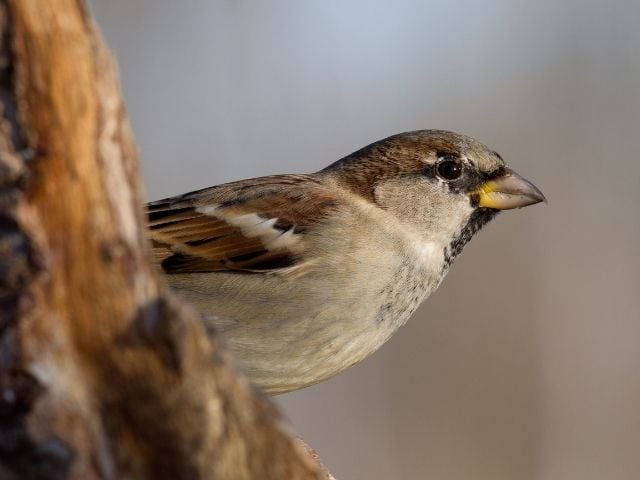
House Sparrows or Passer Domesticus are part of the Sparrow family. Almost everywhere you go, you can see them living in peace. These backyard birds are also considered one of the most common bird species.
They are small birds with big bellies. Females and young birds have pale brown and gray colors, while the males have more black and brown streaks above their wings and upper parts.
This bird weighs only 30 grams and measures 16 cm in length with a wingspan of nearly 30 cm. Males and females have varied plumage colors, which makes them simple to distinguish.
They are bold and human-friendly birds that routinely approach human settlements and residences for food and shelter.
The seeds of small herbs and plants, as well as small fruits and berries, make up the majority of their diet. Plus, they consume a variety of insects, including caterpillars, spiders, worms, and small insect larvae.
A bird feeder can attract birds to their yard by dispersing grains, seeds, and other shredded and small food items such as cracked nuts and corn. Birdbaths do the same thing but with the use of water.
6. Downy Woodpecker
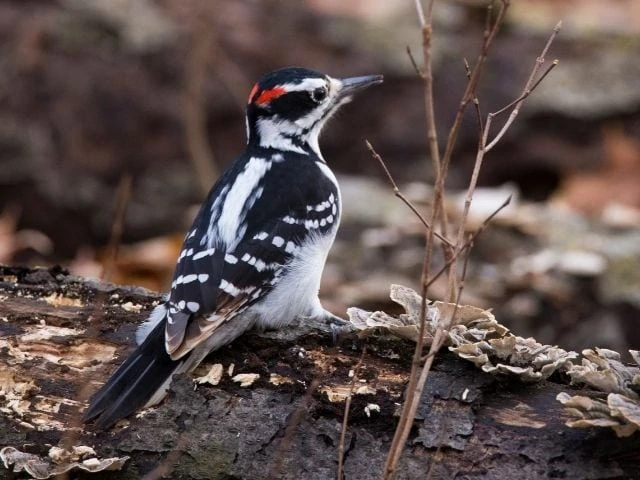
These small birds are also known as Dryobates Pubescens and they belong to the Woodpecker family. Their attractive appearance is composed of black plumage color covering their bodies, with white dots on their wings, and white stripes on their heads.
Males and females are only differentiated by looking at the red spots on the head of the males. These birds have white bellies and white streaks above their wings.
Males tend to have more body weight and wingspan than females, being slightly shorter than males.
These birds feed on small-sized insects, worms, seeds, nuts, and berries found in small shrubs and bushes. They also love feeders that have suet in them. They are more frequent in areas with feeders during winter than summer.
7. Northern Cardinal
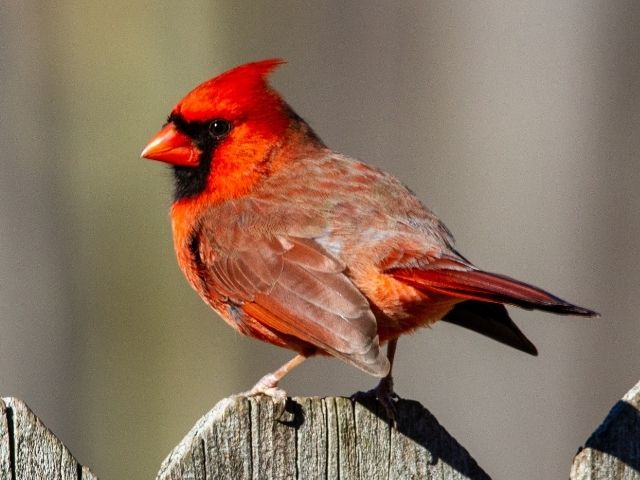
This bird, the Cardinalis Cardinalis, is a popular songbird known for its attractive appearance despite its size. Males are covered with red color across their bodies, with a shade of bright red. Females have duller colors compared to males.
A Northern Cardinal's body length is between 21 – 23.5 cm, while its wingspan is between 25 – 31 cm. They are approximately 33.6 – 65 g in weight.
Plus, this bird has a red beak and crimson plumage with a few black and white markings. They enjoy eating tiny insects such as spiders and worms. Crushed nuts, small seeds of various herbs, and the berries of various small trees and plants are also part of their diet.
8. Mourning Dove
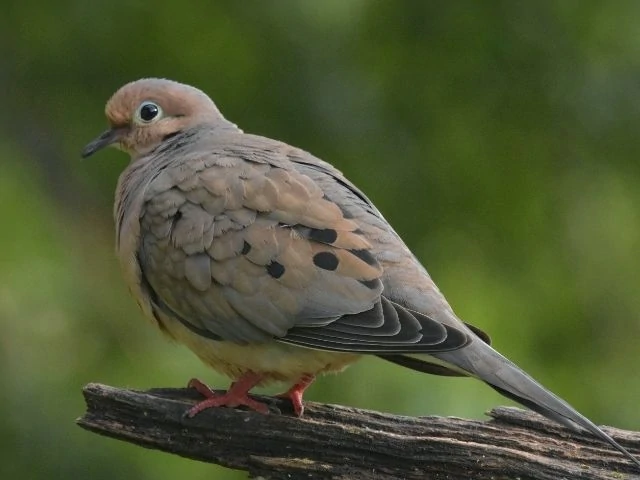
This Zenaida Macroura is a medium-sized bird that belongs to the Dove family. It has a body that is covered with rusty brown color, with a few black spots above the wings. These birds visit bird feeders from Northern Illinois to Southern Illinois and other areas in the USA.
Both male and female Mourning Doves have nearly identical body forms and measurements. Their brown and white plumage makes them easier to notice.
They can grow up to 12 inches, with a wingspan of 18 inches. Their weight can be measured up to 120 grams.
After, the females protect their eggs by laying on them, while males search for food and provide them safety.
These birds consume nuts, seeds, and insect-based bird feeds. Of course, they won’t miss the opportunity of eating little worms found on the ground or in trees.
9. American Crow
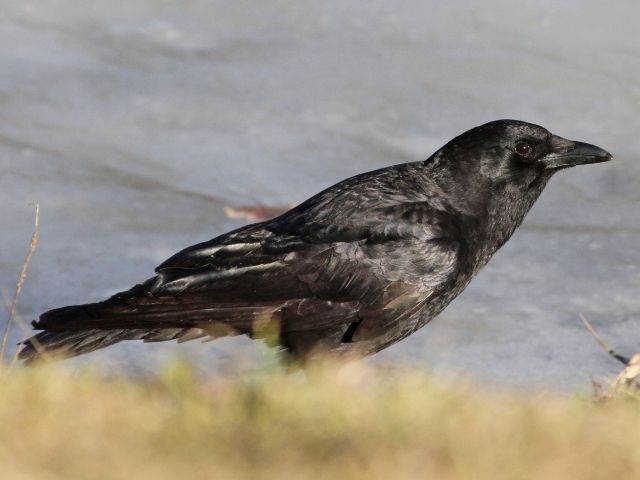
American crows are pretty common but they are still interesting to watch due to their bold nature and high intelligence. These birds are popular and easy to identify with their completely black body unless they’re molting that lets you spot a brown feather or two.
These large birds measure up to 15.8 to 20.9 inches, with wingspans of 33.5 to 39.4 inches.
They can be spotted in wooden areas but they’re more fond of cities.
These birds are friendly and are not shy. You can befriend them just by offering a snack. However, you may want to stay on its friendly side as these intelligent birds can remember faces.
If you want to be their buddies, a treat of peanuts is good for them. Although they love human food, you should hide it away from them as human food isn’t good for them.
Fun Fact: Want to know about the crow's lifespan? Proceed by reading this article, "How Long Do Crows Live?"
10. Northern Harrier
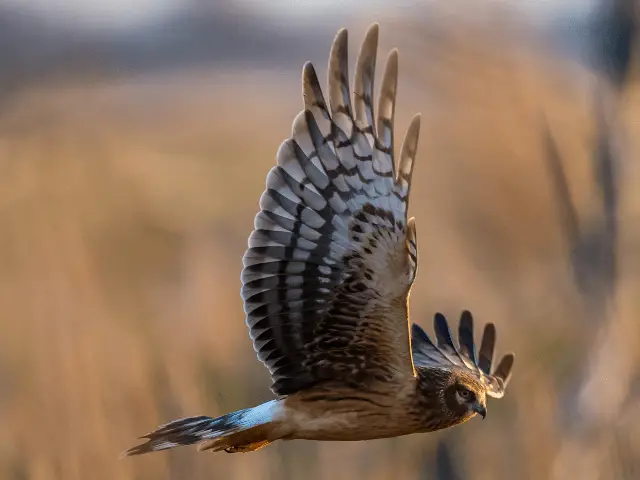
Northern Harriers are slender, medium-sized birds, relatively broad wingspan, and long, rounded tails. Their appearance is like an owl as they have the same face shape and a small, sharply hooked bill.
The color they have differs in terms of their age and gender. Males tend to have gray above and whitish below, dark trailing edge across their wings with black wingtips, and black-banded tails.
On the contrary, females, and immatures are brown, with black bands on the tail. Adult females have white color below with brown streaks, and immatures are buffy, with less streaking. When a bird of this kind flies, you can see its white rump patch.
This raptor bird preys on small animals, may it be amphibians, mammals, reptiles, and other birds as well. When looking for food, it will soar through fields and marshes close to the ground trying to sense tiny animals. Then, they’ll eat on the ground and land on low posts or trees.
A male bird usually performs flying barrel rolls to females during breeding seasons. They breed in wide-open habitats from Arctic Tundra to prairie grasslands to fields and marshes.
Their habitat is hidden on the ground in grasses or wetland vegetation. During winter, these birds migrate and move south, away from areas with snow, ending up in open areas like their breeding grounds.
11. European Kingbird
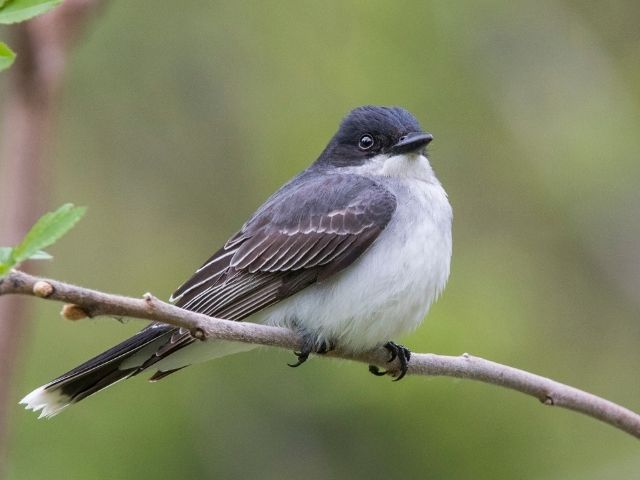
This bird, known as Tyrannus, is one of the largest flycatcher birds in America and it belongs to the Tyrannidae family.
They have big white-colored bellies, their necks are dark gray, and their bills are black. Their body is covered with dark-gray-colored feathers. While the belly, underparts, and breast are covered with white.
The adults are a little different from the young ones. On the other hand, males and females look similar to one another so it is tough to identify them. There is no major difference that makes plumage and body shape.
In terms of their size, they can grow up to 19 to 23 cm in length and have a wingspan of 33 to 38 cm. They can weigh over 33 to 55 g.
These birds search for food on the branches of the trees and ground alike. They have a wide variety of foods to choose from as they’re omnivores. They can eat small-sized flies, insects, green vegetables, fruits, seeds, grains, and many more.
These backyard birds may also visit your home from April to October so prepare them a treat.
12. European Starling
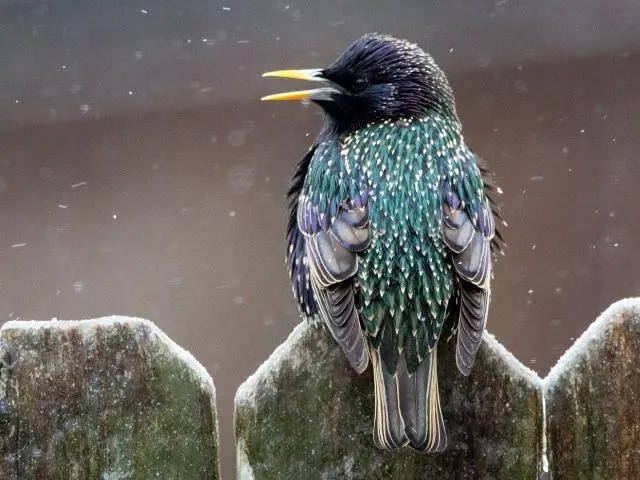
This bird, found in most North American states, is a small-sized bird that belongs to the Starling family. The appearance of this bird gives interest with its gorgeous and bright plumage covering the whole body. They can grow up to 8 inches, with wingspans of 13 inches.
The European Starling's plumage is a glossy black. Their top bodies and wings are all covered in blueish black feathers, which give them a lovely appearance.
Females are significantly smaller in body size, weight, and wingspan than males, although they have nearly identical appearances. Some females have brown plumage instead of black.
Small insects, worms, small seeds, and berries are favorites of the European Starling. It eats primarily from the trees and ground, but it will occasionally approach the feeders for food.
Frequently Asked Questions
What is the state bird of Illinois?
The state bird of Illinois is the songbird, Northern Cardinal, sometimes called Virginia Nightingale or Winter Redbird.
Listen to the different types of calls of Northern Cardinal in this video:
What is the smallest bird found in Illinois?
The Ruby-Throated Hummingbird is the smallest bird that can be seen in Illinois. These aggressive birds measure approximately 3 inches and are considered the smallest in Eastern North America.
What bird is most commonly seen in Illinois?
The American Robin is the most common bird in Illinois which has 50% frequency according to eBird. They are native to the northern United States and is a visitor to the south the in winter season.
What is the rarest bird in Illinois?
Yellow Cardinals have a one-in-a-million chance to be spotted according to experts.
The Bottom Line
Now we’ve seen one of the eyecatchers of Illinois. We hope that we’ve answered your questions and curiosities about the feathered folks you want to appreciate with your own eyes. We wish you a joyful experience as you befriend each and every one on the list above.
Just keep in mind to respect the peace and privacy of each Illinois bird as you watch them in their natural habitat. Also, protect the environment for everyone’s safety.

